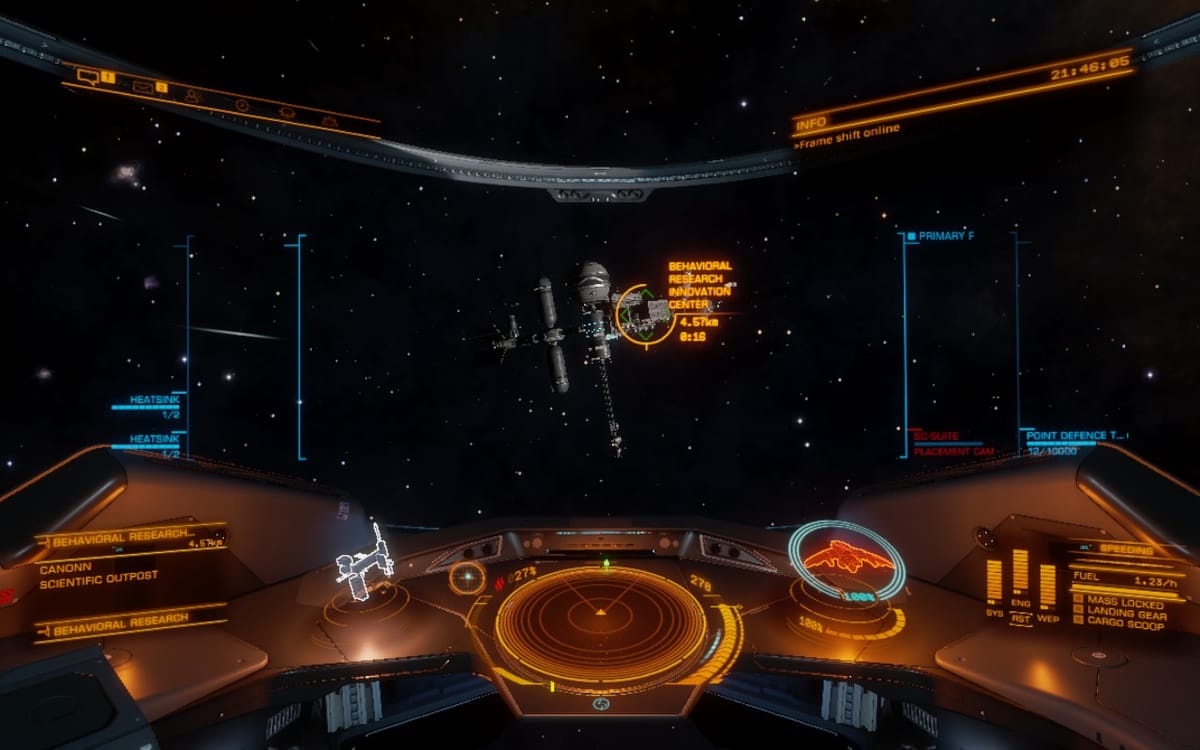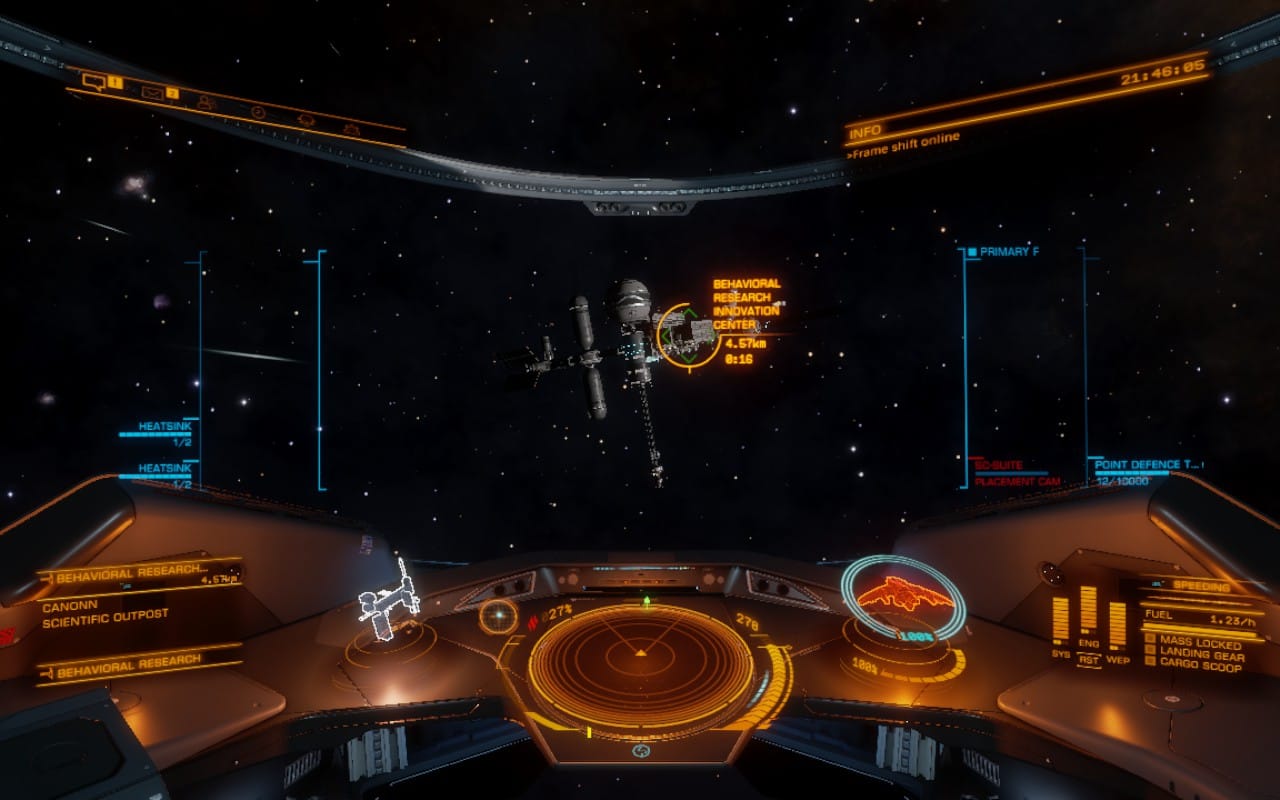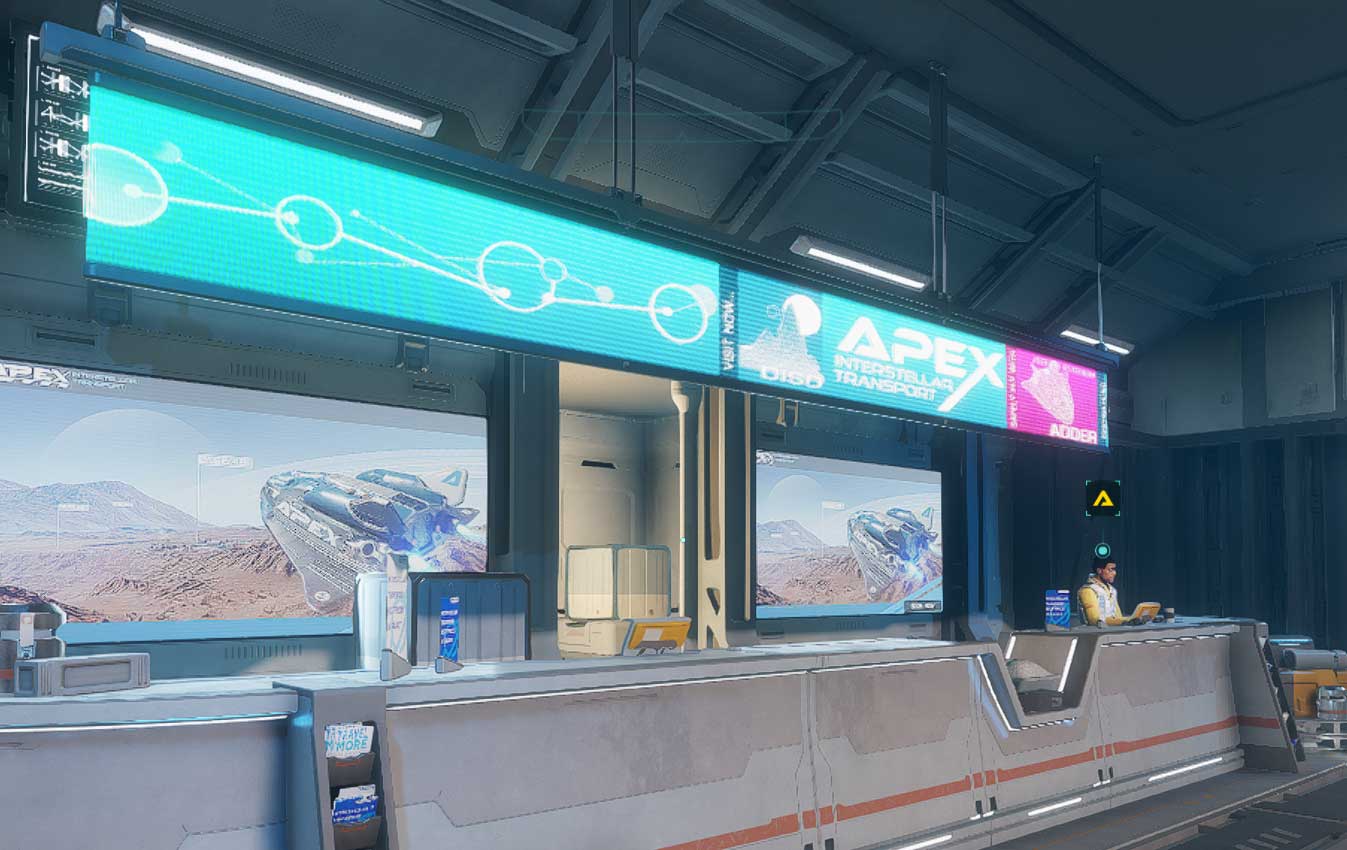Announcing ICBRI, the first Interstellar Conference on Behavioral Research Infrastructure
The Behavioral Research Innovation Center (BRIC) would like to extend an invitation to researchers around the Milky Way galaxy to present their work and findings at the Interstellar Conference on Behavioral Research Infrastructure (ICBRI).

The Behavioral Research Innovation Center (BRIC) would like to extend an invitation to researchers around the Milky Way galaxy to present their work and findings at the Interstellar Conference on Behavioral Research Infrastructure (ICBRI).
Topics of interest include:
- Combating “space madness” for deep space explorers using intentional exploration exercises.
- Black holes and white dwarfs: Valuable (or dangerous) elements of exposure therapies?
- Ergonomic and safety considerations in cockpit design in the emerging Supercruise Overcharge era.
- Effective approaches and strategies for combating Onionhead Dependency.
- GalNet media consumption during and after the Thargoid Invasion.
- Differential pricing strategies in commodity markets (esp. CMM Composites) to spur territorial expansion.
- Implementing remote real time mental health interventions via hyperspace micro-tunnelling.
Researchers seeking to present their work at ICBRI should submit a 500 word abstract to CMDR Akcireericka by 12:00 May 1st, 3311 Galaxy Standard Time. Acceptances will be announced on June 1st, 3311.
Conference Location and Date
The conference will be held on August 1st, 3311 at BRIC’s scientific outpost in the HIP 4055 system, near the Polaris system, approximately 365 light years from Sol.

The outpost itself has limited docks available for spacecraft, so attendees are encouraged to explore lodging options elsewhere in the HIP 4055 system, such as the McCoy’s Folly orbital outpost, or nearby planet-side options such as Kramarsky Landing. If your institution plans on sending a larger contingent of attendees, there will be ample slots available for fleet carriers. All attendees are strongly encouraged to use the local Apex Interstellar Transport tenders to arrive at the site.

In addition to the formal program, CMDR Adenadar II will be organizing excursions to the various moons orbiting HIP 4055’s two ringed gas giants, including a guided tour of the winery and brewery at Scotty’s Yard. Attendees are encouraged to pack warm suits for these trips, as temperatures in the 65 to 85 degrees Kelvin range are expected.

Finally, thank you to Canonn Research for their assistance in launching the first (of hopefully many more) ICBRI events! We are proud to be allies of your faction!
Back in 2025…
In other (non-April Fools’ Day) news, it’s been a busy couple of weeks for BRIC:
- We secured our first consulting services client where we’ll be helping a university healthcare research group adapt an existing cognitive evaluation tool for deployment into some new research contexts.
- The Social Sciences Research Council announced that they are serving as a non-profit fiscal sponsor for BRIC, as we seek out opportunities to pursue grant funding to support our mission.
- We have taken care of our last TODO item (insurance) needed to make our services available to researchers. Send an e-mail to info@bric.digital if you’d like to discuss a project or collaboration.
This week, BRIC co-founder Ericka Menchen-Trevino will be attending (in person) the Midwest Political Science Association (MPSA) conference this week in Chicago from Thursday April 3rd through Sunday April 6th. She will be serving as a discussant and attending BRIC-relevant sessions.
If you’d like to meet with Ericka at MPSA, send her an e-mail at ericka@bric.digital.
We are Elite fans
We’re a big fan of the Elite universe at BRIC, given that its British creators David Braben and Ian Bell first created it back in 1984 on the BBC Micro personal computer. Braben and Bell introduced a number of innovative techniques to implement a fully 3-D (if wire-framed) procedural-generated universe using a 2MHz 8-bit CPU with as little as 32KiB of RAM. For folks interested in the history of computing or algorithmic optimization, there’s a wonderful hour-long documentary on YouTube: “Elite: The game that couldn’t be written”.
Its latest incarnation, “Elite Dangerous” was released over a decade ago and is a massively multiplayer online game (MMO) set in a realistically scaled Milky Way galaxy, seeded by our existing star catalogs (HIP 4055 is one of those stars), and uses procedural generation to populate the rest of the galaxy (around 400 billion stars) using an innovative system called Stellar Forge that leverages players’ graphic cards to simulate the formation and evolution of star systems (including planets and moons) given an initial set of parameters. As Elite players explore more and more of the Milky Way (in over a decade of tens of thousands of players, less than 1% of available stars have been visited), more and more of it pops into existence.
I could probably write a book on Elite and the clever ways Braben and Bell have leveraged cutting edge science and software development to build their systems, but I’ll leave it at that, and say that these two are role models for us at BRIC. And that’s not only for their work in cutting-edge space simulators, but also for making computing accessible, as David Braben has also done as the co-founder of the Raspberry Pi Foundation with inventor Eben Upton. (If you’re not familiar with the Raspberry Pi, you’ll be hearing more about it from us in the context of future projects.)
Stay tuned for more posts soon. I have one coming soon recapping some recent experiences with containerizing research software and how well it works in some contexts, and can be a significant challenge in others.
Happy April Fools' Day from BRIC!




